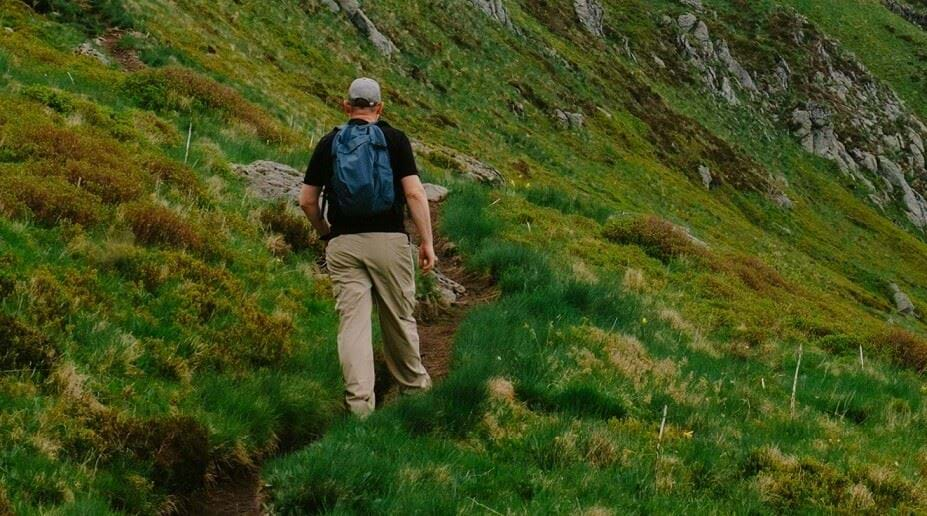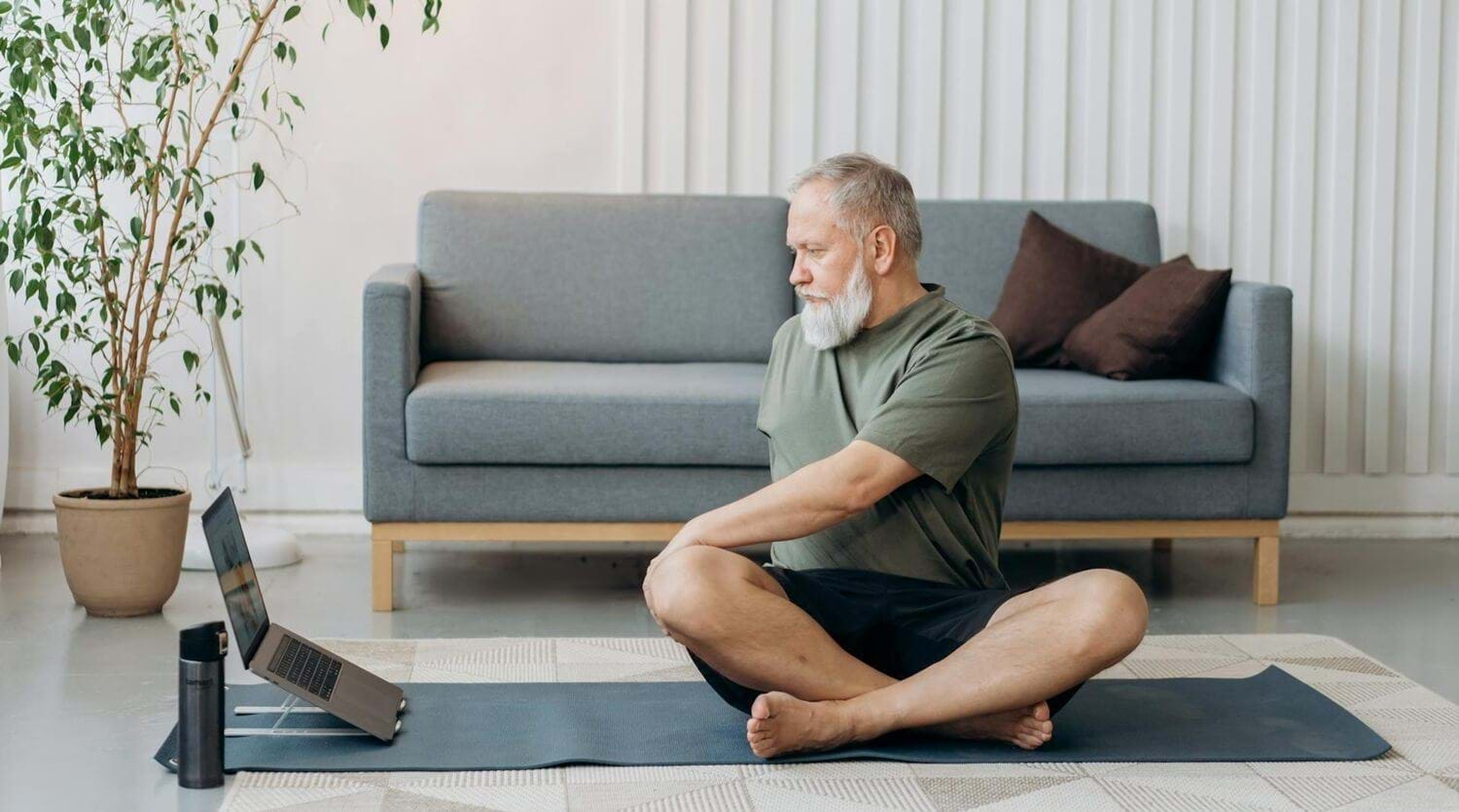Long Distance Walking Training Plan

Love the idea of a marathon, but hate running? Long distance walking is a great alternative that can get you out and about in nature, with plenty of benefits.
Read on to learn all about long walk training, including the benefits and how to get started. We’ve also included a free 26 mile walk training plan to follow.
What Is Long Distance Walking?
Long distance walking refers to any off-road walk that is longer than 20 miles or 32 kilometres, although many long distance walking events in the UK start from 25km. Walks that are completed over most of the day, or over multiple days, are also considered long distance walks. 26 miles is a popular distance to aim for, thanks to being well known as a marathon distance.
Long distance walks are carried out in rural areas over a variety of terrains, from hiking across mountains and valleys to bogs and rivers.
Benefits Of Long Distance Walking
Long distance walking has many benefits, including:
Burning calories. Long distance walks can burn a significant amount of calories which can help with weight loss if that is a goal.
Reduces risk of chronic diseases. Walking regularly reduces the risk of several chronic diseases, including cardiovascular diseases, strokes, and diabetes, and can improve high blood pressure and cholesterol levels.
Improves mental health. Walking can help to reduce stress and improve mood, and this can be even more so on long distance walks out in nature.
Increases cardiovascular fitness. Long distance walking strengthens the heart and lungs and improves aerobic fitness, which can help with movement in day-to-day life.
Strengthens the muscles and joints. Regularly walking long distances, especially over difficult terrain, strengthens and stabilises the muscles in the lower body and core, building strong and stable joints and improving balance.
Increases bone density. Walking is a weight bearing exercise which strengthens and builds bone density in the same way to does muscle. Building bone density helps to prevent osteoporosis in older age, which can reduce the risk of fractures and breaks.
Helps with mindfulness. Long distance walking outdoors can help to practice mindfulness and meditation.
It's free. Long distance walking has almost no costs and can be done for free once you have suitable walking gear.
Do You Need A Long Distance Walking Training Plan?
If you walk every day, you might be wondering whether you actually need to train for long distance walking. While many people might be able to do a long distance walk without training, it's not recommended to do so. Not only will you likely experience intense muscle soreness the next day, but you're more likely to experience overuse injuries such as muscle strains, shin splits, or tendonitis.
A training plan can help you to build your distance up safely over time, making your long distance walks more enjoyable and pain free.
How Long Does It Take To Train For Long Distance Walks?
Your current fitness level and distance walked each week as well as the distance of your walk will affect how long you need to train for long distance walking, but around 12 weeks should be enough for anyone who is regularly walking a few miles most days of the week.
Common Challenges With Long Distance Walking Training
Some common challenges people face when training for a long distance walk are:
Not practicing on the right terrain. Long distance walks take place over a variety of different terrains, and it's important to try and replicate these in your training. That could be doing shorter walks on the intended trail, finding similar landscapes to walk on, or even using the treadmill on incline and stepper machines at the gym to replicate hills.
Not including rest days. Rest days are an important part of any training programme, including long distance walking. Rest days are when our bodies recover and rebuild tissues damaged during training, and without them you are more likely to experience injuries.
Not including cross-training. While walking is unsurprisingly one of the best ways to train for a long distance walk, it's important to include other forms of cardio and strength training to help build strength and endurance with lower risk of an overuse injury.
Not including variety of intensities. A good long walk training plan should incorporate walking at different intensities, such as flat and hill work, different speeds, and carrying different weights.
Long Distance Walking Plan
This is a training plan for 26 mile walk that takes 14 weeks to complete and is designed for those who are walking at least 15 miles over a week. If you are walking less than this, work on increasing your total weekly walking time before completing this plan.
Feel free to change the days you complete each workout to suit your schedule, and adjust distance and intensity as needed.
Week 1 - 4
Monday: 4 mile interval walk (alternating 1 mile of moderate to 1 mile of fast walking)
Tuesday: Full body strength workout
Wednesday: 3 mile comfortable walk
Thursday: 1 hour cross training cardio
Friday: Rest day
Saturday: Build up to 7 miles over the 4 weeks
Sunday: Recovery day (light cardio or stretching)
Week 5 - 8
Monday: 4 mile interval walk (alternating 1 mile of moderate to 1 mile of fast walking)
Tuesday: Full body strength workout
Wednesday: 4 mile comfortable walk
Thursday: 1 hour cross training cardio
Friday: Rest day
Saturday: Build up to 14 miles over the 4 weeks
Sunday: Recovery day (light cardio or stretching)
Week 8 - 12
Monday: 4 mile interval walk (alternating 1 mile of moderate to 1 mile of fast walking)
Tuesday: Full body strength workout
Wednesday: 4 mile power walk
Thursday: 1 hour cross training cardio
Friday: Rest day
Saturday: Build up to 20 miles over the 4 weeks
Sunday: Recovery day (light cardio or stretching)
Week 13 - 14
- Maintain week 12 levels for the two weeks before your long distance walk
Make sure your walks include similar hills to the route you will be taking, whether that's outdoors or on the treadmill on an incline.
Need inspiration for your non-walking workouts? Check these articles out:
Cardio cross training
Full body strength training
On The Day And After: Long Distance Walking Tips
You've completed your training plan to walk 26 miles and now you're ready to do the walk. Here are some tips to help on the day and afterwards.
What to wear
Layers. Walking in Britain means you might experience multiple types of weather in one long walk. Pack for all weathers, and layer up so you can add or remove a layer as your temperature changes.
Comfortable shoes and socks. Comfortable socks and shoes are key to avoiding blisters. Make sure you have tried and tested the ones you bring so you know they work for you.
What to pack
Lots of snacks. Long distance walking is hungry work, so make sure to pack plenty of food to keep you going across the day. Foods that are high in carbs will help to provide energy as you walk while higher fat foods will provide the calories you needed. Sandwiches, cereal bars, fruit, cheese, and nuts are all good options.
Water. You lose a lot of liquid during long walks, and bringing enough water is crucial. The general recommendation is around 200ml for every mile walked.
Walking poles. Walking poles can help to reduce stress on the joints during long walks. If you are planning to bring them, make sure to practice with them beforehand to understand the technique.
First aid kit. A basic first aid kit can be handy to have in case of any incidents during the walk.
Portable charger and cables. Having a portable charger means you can keep your phone charged in case of emergencies.
Comfortable backpack. You'll need a large backpack with comfortable straps and easy access pockets to carry all of the above.
Recovery
If you've been following a training plan, it's likely you'll only experience some moderate soreness after your long distance walk. There are steps you can take to aid recovery to make the next few days more bearable.
Stretch. Stretching brings nutrient rich blood to the muscles to minimise lactic acid build up which is a key factor in muscle soreness. After your walk, spend a few minutes stretching the calves, hamstrings, quads, glutes and hip flexors, as well as the feet.
Gentle movement. The day after your walk, practicing some gentle movement such as a light walk, swim, or yoga can help to reduce stiffness and aches.
Rehydration. Make sure to drink plenty of fluids after your walk to ensure you are adequately rehydrated as this can help with recovery.
Nutrition. Eat a nutrition meal packed with protein, vitamins and essential fats to provide your body with everything it needs to recover.


